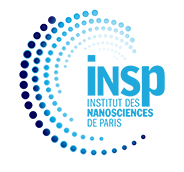Evolution of 2D MoO 3 layer structures on Pd(100): interplay of interfacial interactions and polarity
Résumé
Abstract We explore the structural evolution of two-dimensional (2D) MoO 3 films beyond the monolayer (ML), which have been prepared by physical vapor deposition and post-oxidation onto a Pd(100) surface, and characterized by the tools of surface science and density functional theory (DFT) calculations. According to DFT, the most stable oxide layers are stoichiometric, and derive their energetic stability from the low cost of creating 2D freestanding layers from the orthorhombic bulk phase, good matching to Pd, and the particularly strong adhesion to the substrate. The observed 2D MoO 3 layers are distinguished by well-ordered linear defects, such as domain boundaries in the ML, and misfit dislocations in the bilayer (BL). Applying reactive oxidation preparation conditions results in the formation of ordered arrays of nanostructures, nanowires and nanoclusters, in the MoO 3 BL. The formation of such linear structures is accounted for in the DFT by models of missing row defects of various orientations and stoichiometries. Their relative stability is rationalized in terms of the number of broken Mo–O bonds, the polar character of the nanostructure edges and the interaction strength with the Pd substrate. Comparison with similar WO 3 layers on Pd(100) is provided.

